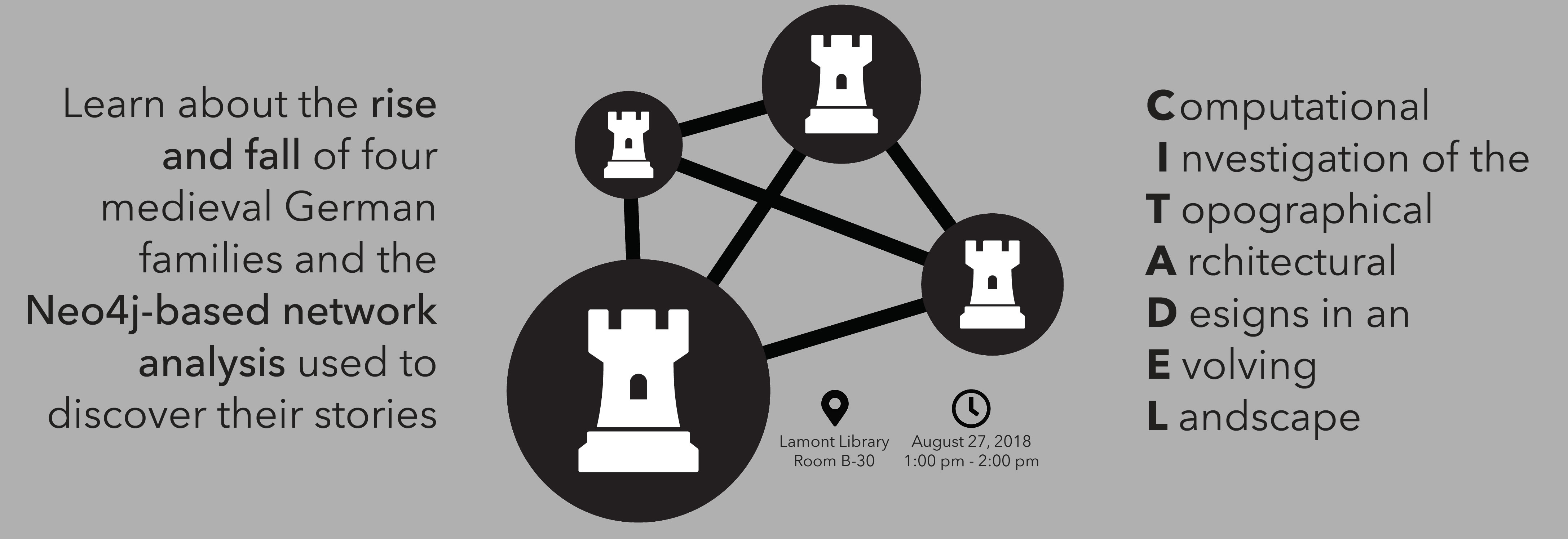
The CITADEL Project: Computational Investigation of the Topographical and Architectural Designs in an Evolving Landscape
This presentation will introduce the CITADEL project and its main components, with a strong focus upon the application of a Neo4j-based graph database to analyze the activities and interactions of four Ministerial families of the German Palatine beginning in the late 12th century.
The Ministerialis were servants raised to the status of a noble without the ancestry or agency typically associated with a traditional noble, and highly subservient to the will of the ruling king or emperor. Despite their original unfree status, many Ministerial families became nobles in the later centuries.
The four ‘focus families’ of this presentation inhabited five of the six CITADEL case study sites, to which they were inextricably linked. As two of the families waned and were extinguished, so too did their associated castles. The other two families, however, managed to survive into the early 19th century as nobles, though their castles had long since been destroyed. Which factors had to align for a family to gain freedom, and more specifically, why did the fates of these four focus families differ so drastically?
This presentation will demonstrate the effectivity of a graph database in providing new insights to these questions, in addition to examples from other projects regarding medieval social networks.
Download an 11x17 poster for this event here.

Aaron Pattee
Aaron Pattee is a doctoral candidate at the Institute of European Art History and the Interdisciplinary Center for Scientific Computing at Heidelberg University, Germany. His dissertation project, titled CITADEL (Computational Investigation of the Topographical and Architectural Designs in an Evolving Landscape), aims to draw new conclusions regarding the relationship between natural and built environments, social hierarchy, and political influence affecting the architectural designs of the iconic red sandstone castles of the German Palatinate.
The foundations of this interdisciplinary project are rooted in architectural art history and scientific computing, through which six medieval castles near Kaiserslautern, Germany, are being investigated using state of the art methods including 3D models, GIS (Geographic Information Systems), and graph databases. In addition to his work, Aaron is a doctoral fellows’ speaker of the HGS MathComp (Heidelberg Graduate School for Mathematical and Computational Methods in the Sciences) excellence initiative, and a member of the Heidelberg Center for the Environment Zukunftskolleg.
His main interest is to integrate textual as well as visual methodologies in Digital Humanities to draw new conclusions regarding historical sites and to protect cultural heritage. Prior to pursuing his Ph.D., he received a Bachelor of Science with a major in German in 2012 and a Master of Arts in Anthropology with a focus in historical Archaeology in 2016 from the University of Nebraska-Lincoln.
